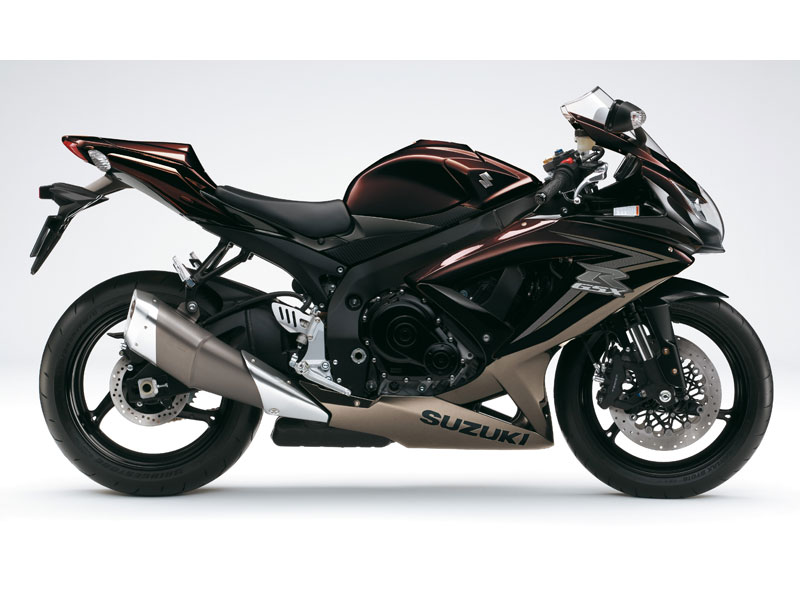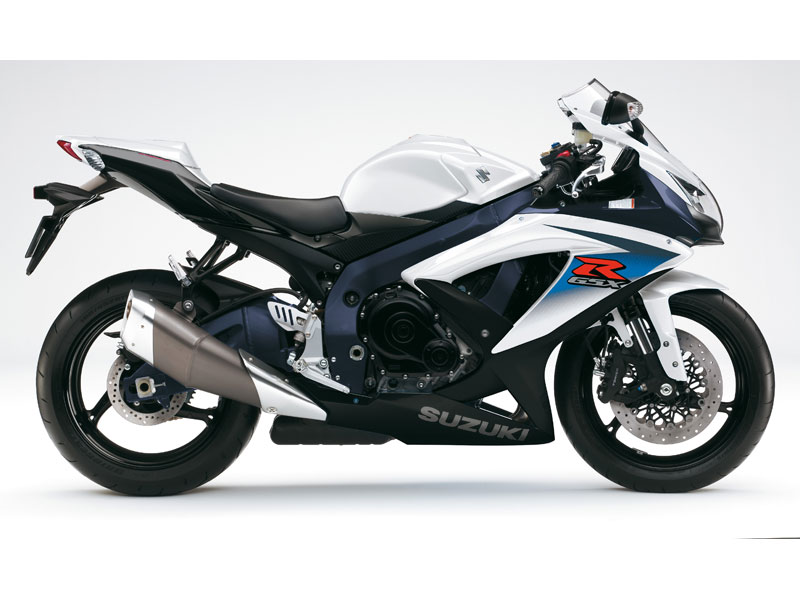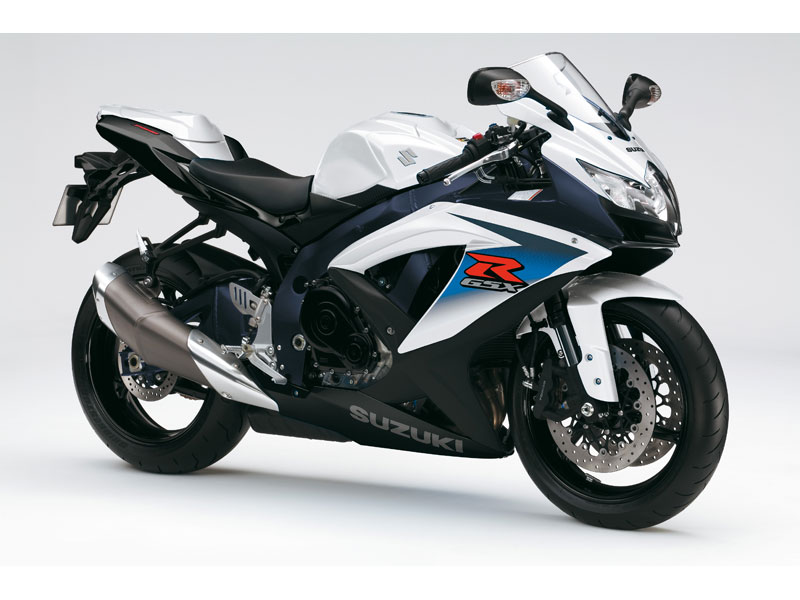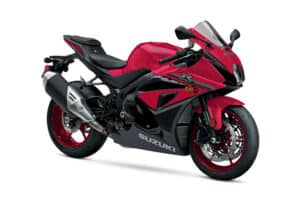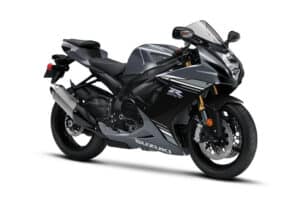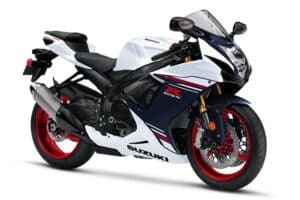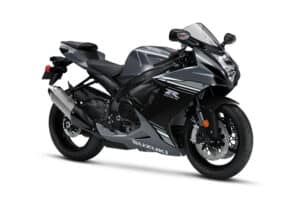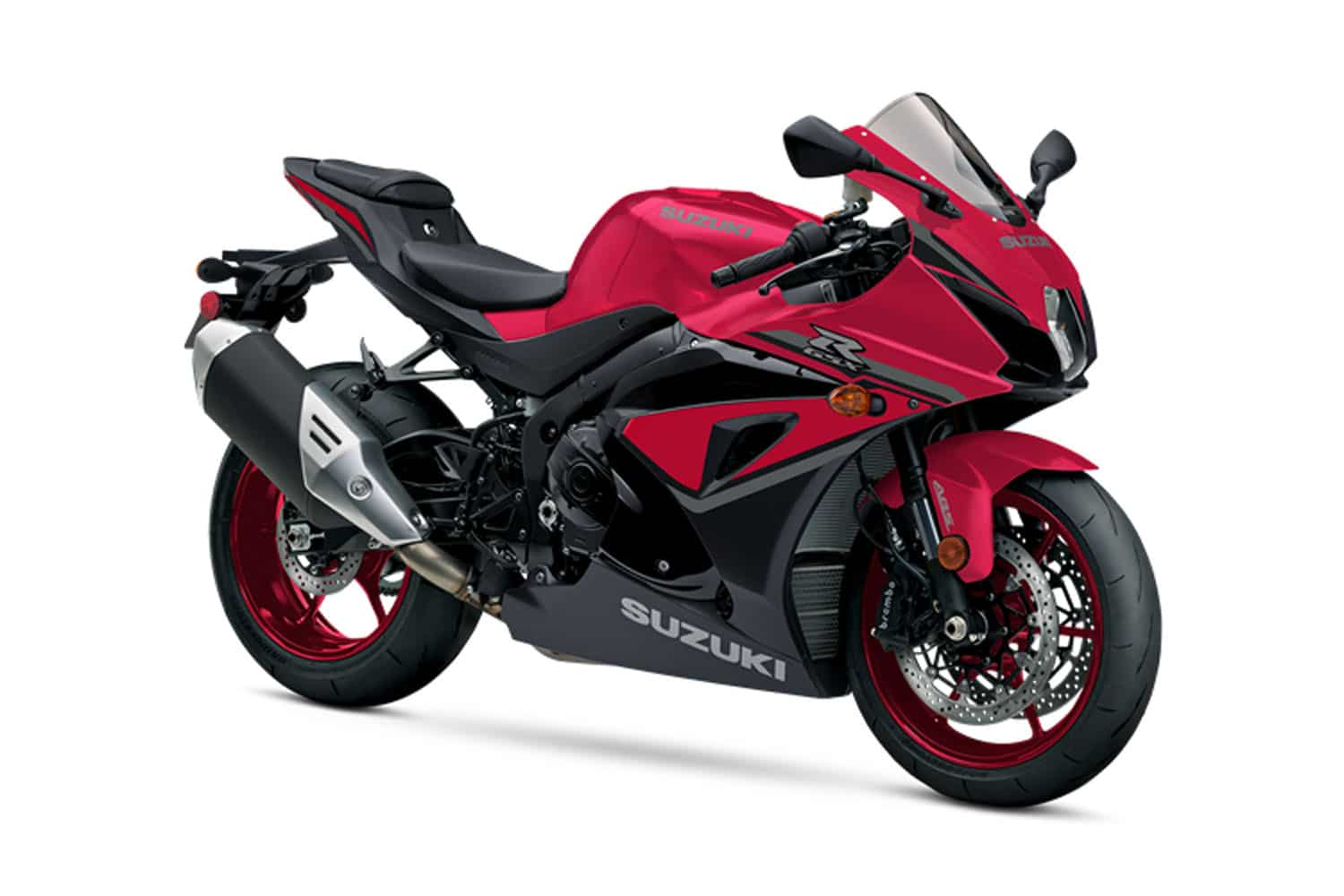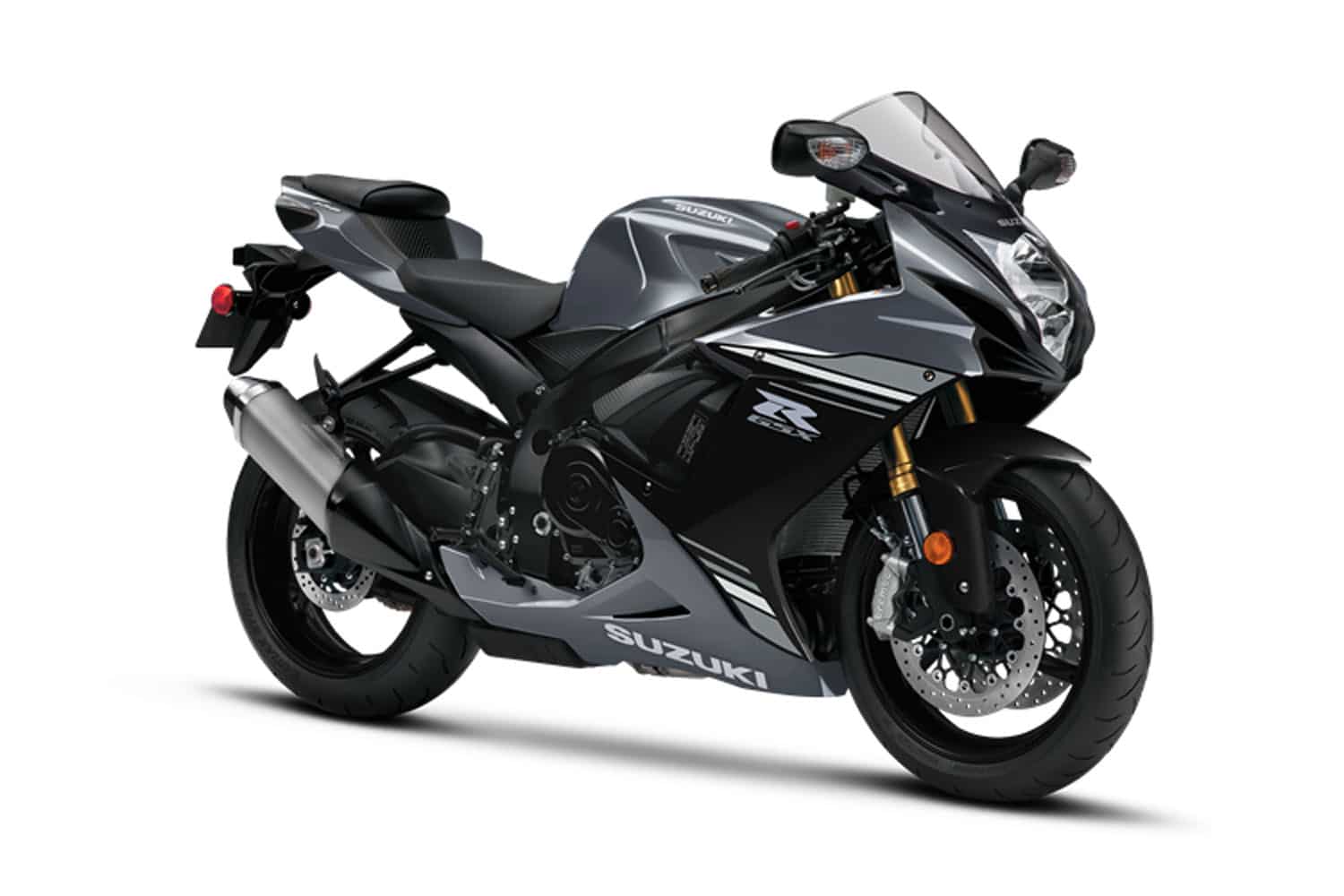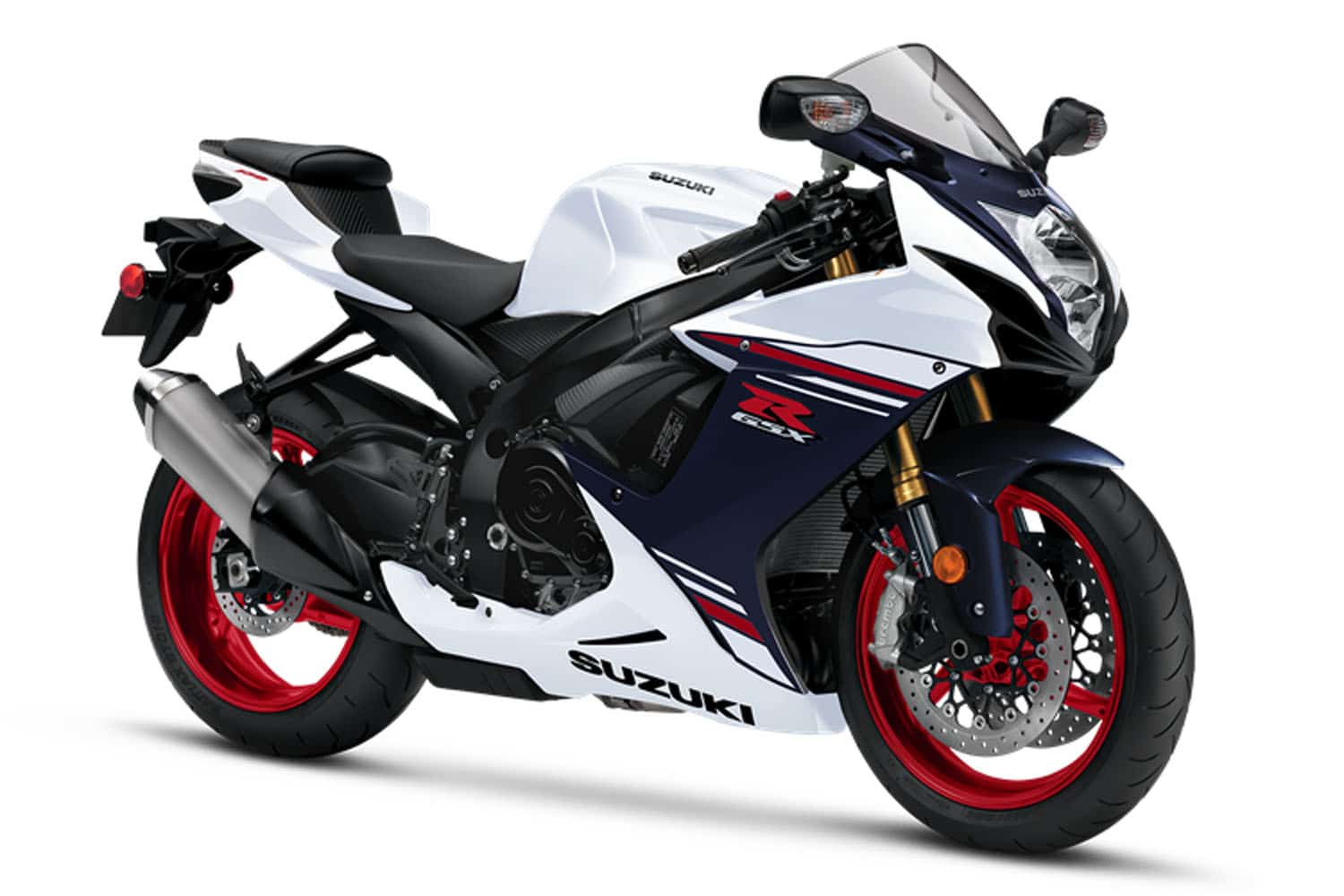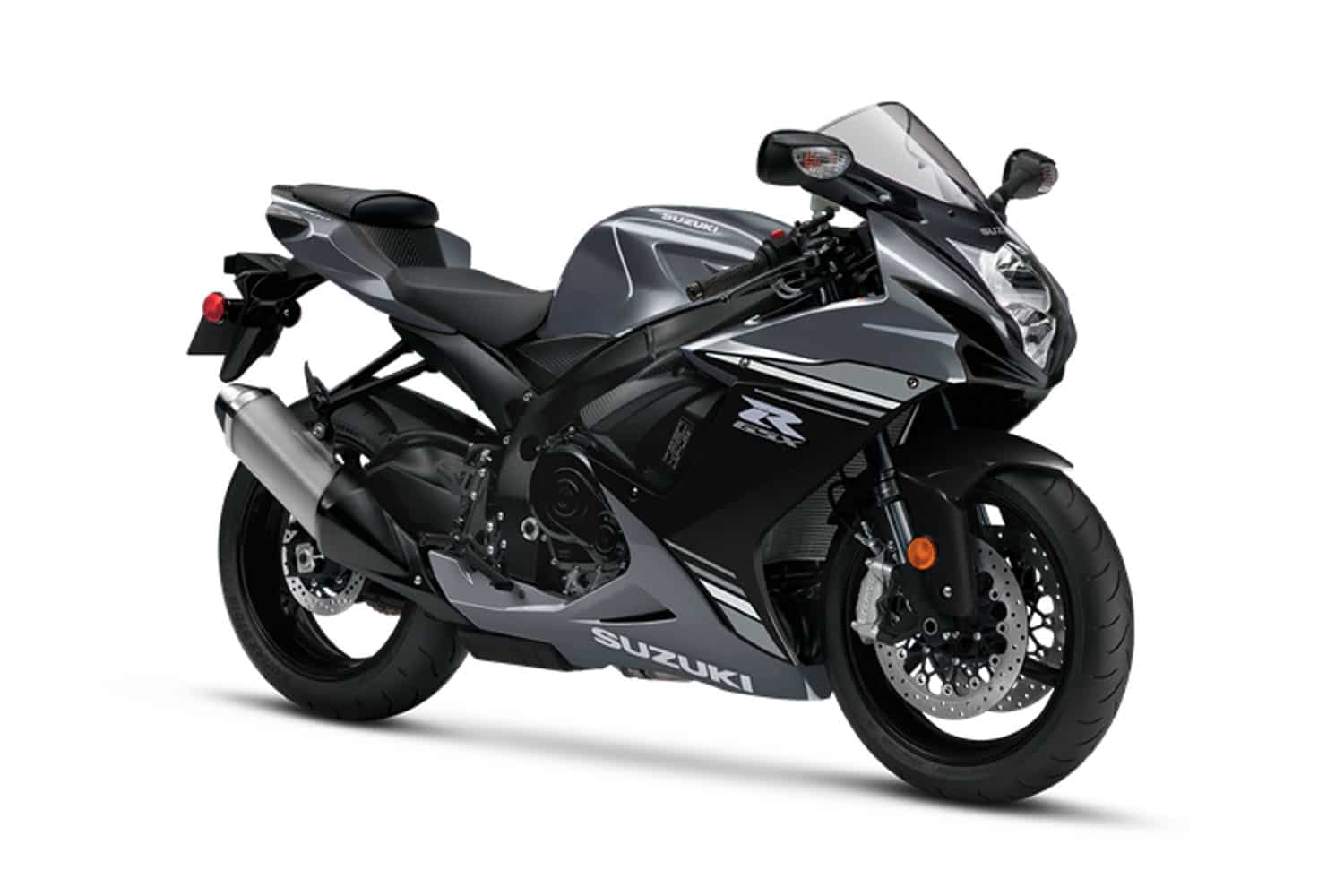L0 Suzuki GSX-R 750 2010, authentic replica of competition
If you are looking for the origins of the current sports replicas of competition, you quickly trasladarás twenty years ago, the Suzuki GSX-R750 1985.
Based on the official motorcycles designed combining resistance and compact dimensions, light weight and high power, the Suzuki GSX-R 750 with aluminum chassis offered a full performance never seen before in a motorcycle series. Like its rivals did not see them when the Suzuki GSX-R 750 returned to the circuit, dominating global motorcycle racing series based on over a decade.
History repeated itself in 1996 with a revolutionary revival of Suzuki motorcycles based in Grand Prix and setting new standards in a compact design, light weight and powerful performance GSX-R 750. Unable to compete with it, other brands platoon left in the starting blocks of the 750 cc category.
Now, after another decade and a year of dominance in the 750 cc class, the new Suzuki GSX-R 750 2010 repeats the story. Marking a new benchmarks in technology replica motorcycle racing, offering better feelings and behavior, with more power and torque in a new, more compact package, designed to accelerate harder and spin faster circuit than ever.
This is the Suzuki GSX-R 750 2010. With 750 4T engine more powerful, efficient and clean cc Suzuki has ever produced. With a new aluminum alloy cast chassis. With a new, more aerodynamic body beautiful.
With advanced management system and electronic injection engine, with different selectable maps on the fly. With suspensions of high quality fully adjustable and radial-mount front brakes. All in a compact package to provide the best performance circuit.
It is as if the effective GSX-R 750 technical team responsible for the 2010 Suzuki had designed a race bike for the street equipped with lights and clocks, horn and mirrors.
This is what’s justice makes the Suzuki GSX-R 750 2010. It is not just a replica of competition. It is real.
Advanced Technology Engine 750 cc
The 749 cc engine of the Suzuki GSX-R 750 2010 is a clear example of advanced design high performance, made with technology developed at the world championships. Big bore and short stroke, with the red line in the 15,000 rpm.
Double overhead camshaft (DOHC) and four titanium valves per cylinder, operated via tappets and tablets.
Admission system of vertical injection bodies double butterfly SDTV (Suzuki Dual Throttle Valve) with double injector. Effective DASS system (Suzuki Raim Air Direct) induction of air and liquid cooling.
The gearbox is a six-speed closed relationship with axes vertically grouped to reduce engine length. The clutch is fitted with a torque limiter debounce and advanced digital engine management system includes the revolutionary S-DMS (Suzuki Drive Mode Selector) for selection of engine maps on the fly.
The internal dimensions of bore and stroke of 70 x 48.7 supercuadradas mm allow a high rpm, with an internal bore and stroke ratio of 0.696: 1 developed in racing.
Each cylinder has two intake valves 29th placed at an angle of 10.5 ° with respect to the center of the cylinder, while the two exhaust valves of 23 mm at an angle of 12 °, which is a set of narrow angle 22 , 5th. This narrow-angle allows the use of a compact combustion chamber TSCC (Twin Swirl combustion chamber), designed to extract the maximum possible power of the air / petrol, by a magic combustion efficiency. With new forged aluminum pistons, the compression ratio is 12.5: 1.
Lightweight titanium valves are controlled precisely by using a single valve spring, reducing mechanical losses. The valves are operated by cover plates of 26 mm in 24 mm intake and exhaust.
The three piston rings equipped are laterally bevelled and the upper compression ring and the piston lubrication in each treatment are finished with a chromium nitride system by PVD (physical vapor deposit) in which the vaporized chromium nitride in a vacuum chamber.
Chromium nitride provides increased hardness and softness that traditional plating, reducing friction and sealing the cylinder, thereby reducing unburned fuel while the combustion force pushing down the piston increases.
Each compression ring has an L-profile, allowing the combustion pressure pushing the ring out and, therefore, improve the sealing of the cylinder.
The connecting rods alloy molybdenum steel are treated with a blasting finish and forged crankshaft is carefully balanced to provide a smooth power delivery off curves.
The cylinders are integrated in the crankcase and treated by the unique Suzuki developed in competition nickel-phosphorus-sílicecarbono, known as SCEM (Suzuki Composite Electrochemical Material), which allows better heat transfer and durability and sealing.
The vent holes between each cylinder located below the lowest point of the piston stroke are now larger diameter measuring 41 mm instead of 39 mm.
These holes allow air trapped in the bottom of each piston downward faster escape to the adjacent cylinders, where the pistons are rising form. This change reduces internal pumping pressure and mechanical losses.
The torque limiting clutch developed in racing is designed to reduce pressure on the discs in the deceleration phase, for smoother and better cornering input reductions.
Acceleration and torn particularly strong, the clutch increases the pressure on the discs, reducing the sliding thereof. Also a new inner shell in the clutch cover aluminum oil pan and minimizes noise caused by resonance.
The new NGK CR9EIA-9 each incorporated fine iridium alloy electrode that produces a hotter spark (contributing to a better combustion) offering a lifespan twice as long as a conventional type.
Ignition coils embedded in each of the caps are now less outer diameter (20 mm instead of 22 mm), reducing weight.
A new starter motor that works through rare earth magnets is lighter and more compact than that used in previous models, weighing just 860 grams. (Before 1015 g.) And a length of 92.5 mm instead of the above 102.5 mm.
The exhaust system features a new larger diameter silencer with triangular section designed to increase ground clearance while increasing the internal volume, allowing the Suzuki GSX-R 750 2010 meet stringent emissions regulations even with increased engine power.
The central part of the exhaust located between the collectors and the camera located under the engine includes a servo-controlled butterfly valve SET (Suzuki Exhaust Tuning) to adapt the exhaust back pressure to engine speed, throttle position and gear engaged maximizing torque throughout the rev range and in varied conditions.
Effective trapezoidal radiator curved profile seems straight out of a racing bike, and incorporates a compact electric fan that turns on and off according to the coolant temperature.
The curved design increases cooling capacity to as much as 31.4 KW / H without increasing the width of the radiator and cowl, something very important in aerodynamic terms.
A new higher-capacity generator provides the energy needed for new electronics of the Suzuki GSX-R 750 2010, without increasing weight or external dimensions.
The Suzuki GSX-R 750 2010 incorporates a powerful digital engine management system, based on a 32-bit processor and 1024 Kb of ROM (Read-Only-Memory).
This processor is built into a new ECM unit (known as the “black box”) smaller and lighter. The new ECM weighs 340 grams. (Formerly 380 gr.) And is clearly narrower and thinner than the previous model ECM.
The enormous processing power of the engine management system not only controls the fuel injection to produce efficiency and engine performance out of the ordinary, but also operates an exclusive S-DMS (Suzuki Drive Mode Selector) whereby the pilot can select one of three modes mapping engine control (maps that regulate injection and ignition systems) to suit personal tastes through a three-position switch on the right handlebar. The three maps are identified as A, B and C, and each represents a different way to deliver the power.
Digital engine management system with adjustable mapping S-DMS and SDTV fuel injection
Each map has been developed thanks to the experience gained in racing engines. The change from one to another is instantaneous, and can thus choose a map for an area of the circuit and another for the rest.
The system also allows the rider to select a specific map that best suits your preferences according to road conditions, choosing eg one for driving on the motorway and another for more twisty roads.
At the heart of electronic injection of the Suzuki GSX-R 750 2010 bodies found two new double injection SDTV (Suzuki Dual Throttle Valve) with two injectors and two butterfly valves each.
Each main valve of 48 mm is commanded by the throttle, while secondary 50 mm is operated through the digital management system engine to maintain the target speed of intake inlet (based on rpm, throttle position and gear selection) for improved cylinder charging and more efficient combustion, offering a more linear power delivery and more torque.
And compact the new eight injectors have smaller rather than larger holes 4 as before, producing a fine spray of fuel for more complete combustion. The primary injectors work at all times, while secondary add more fuel at high speed and full load conditions of the cylinders.
The main injector for each cylinder is positioned at an angle 41º more direct and aimed directly at the intake, contributing to improved throttle response at all engine speeds.
The secondary injector is placed at an angle of 15 and sends the gas against the open secondary valve, further improving atomization and combustion efficiency. A new speed guns (also known as tunnels admission) mounted on the side of the airbox injection bodies help improve mid-range acceleration.
The volume of petrol supplied by the injectors is controlled by the engine management system by the duration of the injection process. The longer the injector is working, more fuel into the cylinder. The duration of operation of the primary injector is calculated based on the engine speed, intake pressure (vacuum) and throttle position. The secondary injector estimated duration of work according to throttle position and engine rpm.
A new system ISC (Idle Speed Control) automatically improves cold starting and stabilizes engine idle speed of the engine to adapt to different conditions, regulating the volume of fresh air that feeds the idle circuits of the injectors based on the coolant temperature.
Depending on the throttle opening and engine rpm, the engine management system controls the Suzuki Pulsed Air system (PAIR) of the Suzuki GSX-R 750 2010, which directly injects fresh air from the airbox to the ducts exhaust as needed, igniting unburned hydrocarbons (HC) and thus reducing emissions of carbon monoxide (CO).
The exhaust chamber mounted under the engine incorporates a catalyst reduces emissions of HC, CO and NOx (oxides of nitrogen) even more.
The intermediate collector also incorporates an oxygen sensor used by the engine management system to adjust more precisely the amount of fuel injected into the cylinders, fulfilling the Suzuki GSX-R 750 2010 with strict Euro 3 and Tier 2 out of emissions.
Fully adjustable suspension and improved cycle part
The chassis of the Suzuki GSX-R 750 2010 has been designed and developed in order to improve circuit performance at speeds even under maximum inclination.
This built by welding together five precise castings aluminum alloy, each designed to produce a specific torsional rigidity, including a hollow area of the steering, two main beams with anchor rocker shaft built and two reinforcements cross located above and below the swingarm.
The small number of parts and welds helps to improve the overall accuracy and efficiency.
The rear subframe, which supports the pilot and the tail is now simpler and lighter, with individual profiles of cast aluminum on each side of the bike Suzuki GSX-R 750 2010 for anchoring the seat, attached directly to the main chassis by back. This new design saves 125 gr. weight.
The aluminum alloy swingarm is made up of castings and other extruded rectangular, and the anchoring system of rear shock uses a piece aluminum alloy swingarm pivots on it with forged aluminum rods connected to the chassis.
This scheme reduces the lever arm of the wheel in its upward movement, improving sensitivity and progressivity of the suspension, increasing the traction on pavements crimped while still responding smoothly larger bumps.
This system also reduces side loads, helping the shock absorber to perform a smooth progressive curve in the compression phase.
The Showa rear shock enjoy an exterior system spring preload adjustment hydraulic extension and compression at low and high speed with a wheel travel of 130 mm.
The inverted Showa fork has 41 mm rods in diameter and not just externally adjustable spring preload, but also in hydraulic extension and compression at low and high speed. The bars are now coated with a new treatment and the route of the front wheel is 120 mm.
Following the trend of racing bikes, the Suzuki GSX-R 750 2010 has adjustable footrests in aluminum alloy casting, choosing between three possible positions in a range of 14 mm vertically and horizontally to fit the tastes of each pilot.
The pump and rear brake pedal will move in conjunction with the footrest while forwarding the shift lever can be adjusted to adapt to changes in the position of the footrest.
The geometry of the part cycle of the Suzuki GSX-R 750 2010 is derived from the competition and has a wheelbase of 1,400 mm, a pitch of 23,8º and an advance of 97 mm.
The seat height is relatively low, 810 mm and riding position has been meticulously designed to work well both on track and on the open road, with a relatively short distance between the handlebars and the hips of the pilot.
The electronically controlled steering damper produces less force for greater agility at low speed or stop and greater force at high speeds on circuit or highway.
A solenoid valve by the engine management system activated moves a tapered needle through its seat in the main hydraulic circuit of the steering damper, reducing or increasing the oil passage to a higher or lower damping force.
Lighter alloy wheels and radial-mount front brakes
The rims of aluminum alloy castings are lighter, stiffer and robust, thanks to the new three curved arms in the direction of wheel rotation.
The measures of the tires have not changed, measuring 3.50 x 17 “front and 5.50 x 17” behind, but new tires are lighter, 180 gr. the front and 250 gr. the rear respectively.
Bridgestone radial tires designed specifically for the Suzuki GSX-R 750 2010, measuring 120 / 70ZR17 front and 180 / 55ZR17 rear.
The front brake consists of two pronged Tokico opposed pistons and radially mounted; overlapping pistons 30 and 32 mm help balance pad wear, while the new radial pump is now smaller diameter, 17 mm (19.05 mm before).
At the same time some new hoses low expansion and smaller diameter improve the transmission of pressure on the handle, and the performance and feel.
A more powerful return spring helps the air pressure against handle high speeds does not affect circuit.
The two front brake discs 310 mm in diameter now have a thickness of 5 mm, instead of the above 5.5.
The size of the screws of the disk has been slightly reduced and, combined with the finest discs reduce unsprung mass and inertia, improving the effectiveness of suspension and agility at the entrance of the curves in circuit.
The rear caliper piston Tokico one works together with a disc of 220 mm in diameter and 5 mm thick.
Exciting new style
The Suzuki GSX-R 750 2010 comes with an exciting, angular and evolved new look, including a powerful new optical front and an even more effective aerodynamics.
Improvements in the air flow path are the result of work in the wind tunnel, which reduces the coefficient of friction while maintaining the pilot wind protection and increases the efficiency of dynamic air intakes.
The front cowling incorporates three projectors located next to each other, the central 55W halogen light H11 for short and long two halogen light Multi-reflector HB3 60W on each side.
When the beam is selected, all three headlights are activated, illuminating a wider area ye increasing the visibility curve.
The light position above the central lumen projector maintains the characteristic pattern popularized by the late model Suzuki GSX-R.
The dynamic air intakes SRAD (Suzuki Ram-Air Direct) are positioned as close to the center of the front of the bike Suzuki GSX-R 750 2010, where the air pressure is greater. Louvered a new system replaces the previous grid inside air intakes, redirecting the air flow and reducing intake resistance thereof, which results in increased pressure in the airbox and therefore in more power.
The upper casing is slightly wider near the handlebars, reducing turbulence, while the bottom is slightly narrower, reducing the front surface.
The front turn signals are integrated into the mirrors, further reducing frontal area, while the rear are incorporated into the new, slimmer tail.
The rear brake lights and incorporate LED technology (Light Emitting Diodes) as light source. The LED lights are more durable and lighter and consume less power than conventional filament, while allowing greater freedom to designers.
The combination of a red plastic and red LEDs contributes to greater richness and depth of light, increasing visibility and providing greater personality to the whole.
The fuel tank is now slightly wider, with increased 16.5 to 17 liters, with a coating on the bottom of mechanical noise absorbing capacity.
The dashboard includes servo motor controlled analog tachometer and a digital multifunction LCD panel with speedometer, odometer with partial double, digital time clock, odometer, fuel reserve, engine temperature and anomalies in the injection and digital gear position indicator .
The instrumentation also includes a measure of the performance map S-DMS selected by the pilot. Additional LED witnesses report on the use of intermittent, neutral, high beam and gas reserves. Other programmable LED emits a flash to indicate a preselected rpm.
The Suzuki GSX-R 750 2010 is more than a sportbike
The Suzuki GSX-R 750 2010 is more than a sportbike, is the direct descendant of the first Suzuki GSX-R, the first replica of competition. The current incarnation of more than 20 years of innovation. The fruit of the genuine suzuki technology. Offering the most balanced performance. To the street. For the track. For your life.
L0 Suzuki GSX-R750 2010 Specifications
Colours
Estelar Blue Metallic / White Marbled Glass (YBD)
Titanium Silver Metallic / Crystal Brown Midnight 2 (YUG)
Dimensions and curb weight
Overall length: 2,040 mm (80.3 in)
Overall width: 715 mm (28.1 in)
Overall height: 1,125 mm (44.3 in)
Wheelbase: 1,405 mm (55.3 in)
Ground clearance: 130 mm (5.1 in)
Seat height: 810 mm (31.9 in)
Kerb Weight *: 168kg. (370 lbs)
(*) Includes gasoline, lubricants, coolant, battery fluid and all the equipment for normal use of the vehicle (tools included).
Engine
Engine Type: 4 stroke, liquid cooled, DOHC.
Number of cylinders: 4.
Calibre: 70.0 mm (2.756 in)
Stroke: 48.7 mm (1.917 in)
Displacement: 750 cm3 (45.8 cu In.)
Compression ratio: 12.5: 1.
Fuel System: Fuel delivery method.
Air filter: Paper element.
Starter system: Electric.
Lubrication system: Wet collector.
Idle speed: 1200 ± 100 rpm
Drivetrain
Clutch: Wet, multiplate oil.
Transmission: 6-speed constant Gear.
Gearshift pattern: 1 reduction, 5 increase.
Primary reduction ratio: 1.761 (74/42)
Gear Ratio:
Low: 2,785 (39/14)
The 2nd: 2,052 (39/19)
The 3rd: 1,714 (36/21)
The 4th: 1,500 (36/24)
The 5th: 1,347 (31/23)
High: 1,208 (29/24)
Final reduction ratio: 2.647 (45/17)
Drive chain: RK 525ROZ5Y, 116 links.
Chassis
Front suspension: Inverted telescopic, coil spring, oil damping, adjustable for preload, compression and rebound.
Rear Suspension: For links, coil spring, oil damping, adjustable for preload, compression and rebound.
Carrera Front fork: 120 mm (4.7 in)
Rear wheel travel: 130 mm (5.1 in)
Steering angle: 23º 45 ‘
Tilt the front axle: 27 (right and left)
Filmed: 97 mm (3.8 in)
Turning radius: 3.4 m (11.2 ft)
Front brakes: Double disc brake.
Rear brake: Disc brake.
Front Tire Size: 120/70 ZR 17 M / C (58 W), tubeless.
Rear Tire Size: 180/55 ZR 17 M / C (73 W), tubeless.
Electrical Equipment
Ignition Type: Electronic ignition (Transistorized).
Ignition timing: 5th BTDC at 1200 rpm
Spark plug: NGK CR9EIA-9 or DENSO IU27D
Battery: 12 V 36.0 kC (10 Ah) / 10 HR
Generator: Three-phase AC generator
Main fuse: 30 A
Fuse: 15/10/15/15/10/10 A
Headlight:
High beam 12 V 60 W (HB3) x2
Low light: 12 V 55 W (H11)
Flashing light 12 V 21 W
Number plate light 12 V 5 W
Brake / rear: LED
Light: 12 V 5 W
Speedometer light: LED
Neutral indicator light: LED
Indicator light beam: LED
Indicator light turn signal: LED
Indicator light fuel level: LED
Light oil pressure warning: LED
Capabilities
Fuel tank, including reserve: 16 l. (4.2 / 3.5 US / Imp gal)
Engine oil:
oil change: 2,200 ml (2.3 / 1.9 US / Imp qt)
with filter change: 2.500 ml (2.6 / 2.2 US / Imp qt)
Repair: 2.900 ml (3.1 / 2.6 US / Imp qt)
Refrigerant: 2,650 ml (2.8 / 2.3 US / Imp qt)
L0 Suzuki GSX-R750 2010 Image Gallery

